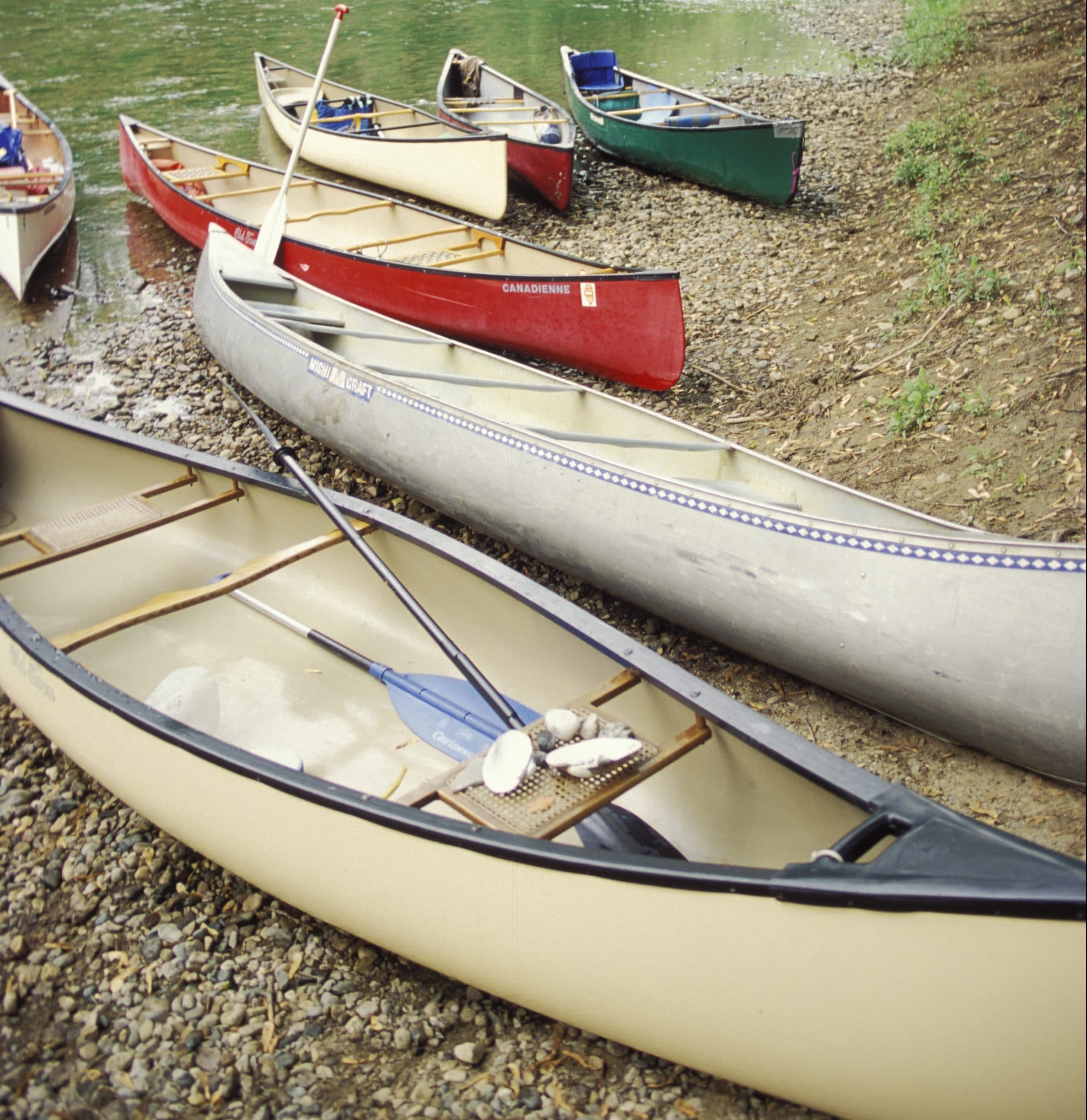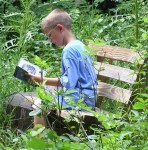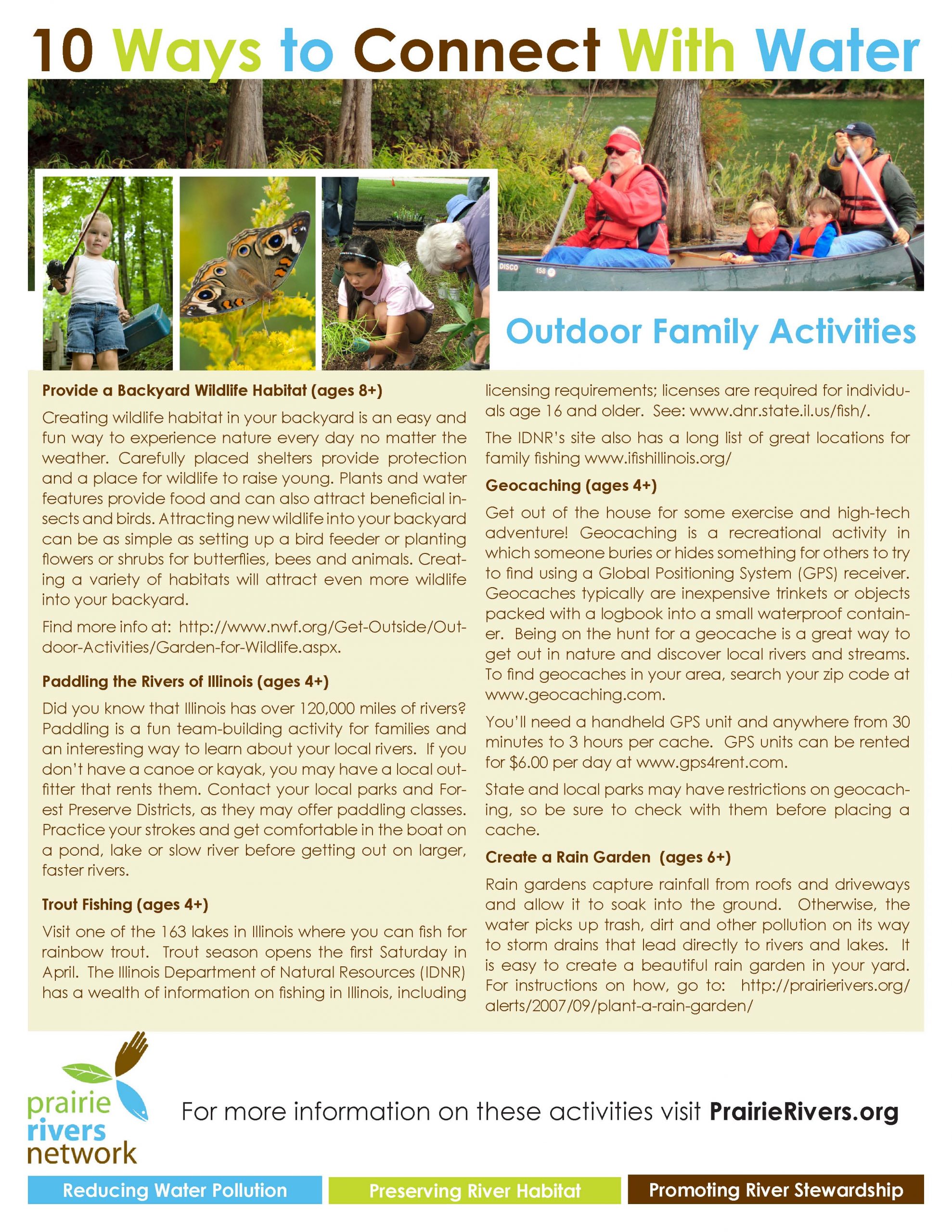10 Fun Ways to Connect Kids with Water
1. Provide a Backyard Wildlife Habitat (ages 8+)
Creating wildlife habitat in your backyard is an easy and fun way to experience nature every day no matter the weather. Carefully placed shelters provide protection and a place for wildlife to raise young. Plants and water features provide food and can also attract beneficial insects and birds. Attracting new wildlife into your backyard can be as simple as setting up a bird feeder or planting flowers or shrubs for butterflies, bees, and animals. Creating a variety of habitats will attract even more wildlife into your backyard.
Find more info for building your wildlife habitat.
2. Paddling the Rivers of Illinois (ages 4+)
 Did you know that Illinois has over 120,000 miles of rivers? Paddling is a fun team-building activity for families and an interesting way to learn about your local rivers. If you don’t have a canoe or kayak, no problem, find an outfitter to rent from. Contact your local parks and Forest Preserve Districts as they may offer paddling classes. Practice your strokes and get comfortable in the boat on a pond, lake, or slow river before getting out on larger, faster rivers.
Did you know that Illinois has over 120,000 miles of rivers? Paddling is a fun team-building activity for families and an interesting way to learn about your local rivers. If you don’t have a canoe or kayak, no problem, find an outfitter to rent from. Contact your local parks and Forest Preserve Districts as they may offer paddling classes. Practice your strokes and get comfortable in the boat on a pond, lake, or slow river before getting out on larger, faster rivers.
Once you’re ready to paddle you’ll want to check out the national scenic Middle Fork River, beautiful Fox River, diverse Sangamon River, or any of Illinois’ other unique rivers.
The Illinois Paddling Council’s website has lots of information on all aspects of paddling in Illinois.
3. Trout Fishing (ages 4+)
Visit one of the 163 lakes in Illinois where you can fish for rainbow trout. Trout season opens the first Saturday in April. The Illinois Department of Natural Resources (IDNR) has a wealth of information on fishing in Illinois, including licensing requirements. Licenses are required for individuals age 16 and older.
The IDNR’s site also has a long list of great locations for family fishing.
4. Geocaching (ages 4+)
Get out of the house for some exercise and high-tech adventure! Geocaching is a recreational activity in which someone buries or hides something for others to try to find using a Global Positioning System (GPS) receiver. Geocaches typically are inexpensive trinkets or objects packed with a logbook into a small waterproof container. Being on the hunt for a geocache is a great way to get out in nature and discover local rivers and streams. To find geocaches in your area, search your zip code here.
State and local parks may have restrictions on geocaching, so be sure to check with them before placing a cache.
5. Create a Rain Garden (ages 6+)
Rain gardens capture rainfall from roofs and driveways and allow it to soak into the ground. Otherwise, the water picks up trash, dirt and other pollution on its way to storm drains that lead directly to rivers and lakes. It is easy to create a beautiful rain garden in your yard. For instructions on how, click here.
6. Measuring Your Family’s Water Use (ages 6+)
How much water does your family use? Performing a home water audit will inform your kids of how much water they use in daily activities like brushing teeth, flushing the toilet, washing dishes, or playing with the hose. Have everyone guess how much water you’re using and then see how close you are.
Home water audit resource:
7. Testing Your Tap Water (ages 6+)
In Illinois, 76% of our public water supplies comes from surface water, including rivers. Testing your tap water is a good way to start a conversation with your kids about water pollution. There are a variety of simple, reliable, and inexpensive drinking water test kits that can be purchased online or at “big box” stores. With these kits you can test for one or several of the most common pollutants including iron, copper, lead, bacteria, pesticides, and nitrates. Once you have tested your water, you can compare the results to water quality reports from your local water provider (provided once a year with your bill).
Find your local water quality reports from Illinois American Water.
8. Play Water Games Online (ages 4+)
The Environmental Protection Agency (EPA) has some good interactive games to teach kids about drinking water and what fish are safe to eat.
9. Read a Good Book (all ages)
 There are a number of amazing children’s books about the significance of water in our lives. Check out The Wonder Thing and Every Drop Counts for ages 4-8. You might try Experiments with Water or Salamander Rain: A Lake and Pond Journal with children ages 9-12. The Dr. Seuss classic The Lorax tells about the effect of pollution on our environment. Visit your local library and ask the librarian for more suggestions.
There are a number of amazing children’s books about the significance of water in our lives. Check out The Wonder Thing and Every Drop Counts for ages 4-8. You might try Experiments with Water or Salamander Rain: A Lake and Pond Journal with children ages 9-12. The Dr. Seuss classic The Lorax tells about the effect of pollution on our environment. Visit your local library and ask the librarian for more suggestions.
10. Write a Letter to Your Elected Officials (ages 10 +)
Elected officials want to know what their constituents think about environmental issues. Prairie Rivers Network posts Action Alerts (sign up on our website) asking citizens to write their representatives about issues that impact our water and rivers. Even though children can’t vote, they can write about their experiences and why rivers are important to them. Parents can help with researching the topic or even planning a field trip to help them identify key players, and learn to compare different perspectives, as well as possible solutions.
Contact info for federal and state elected officials.








